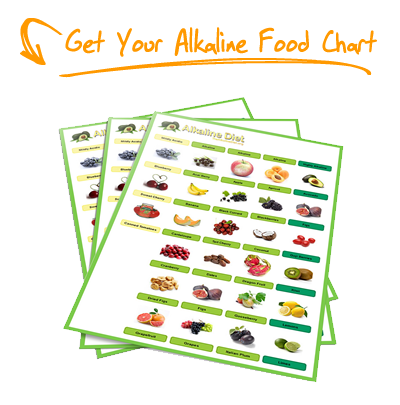Manuka Honey – The Awesome Honey That Heals
Posted on 12. Jul, 2010 by admin in Blog
“Honey is said to be food of foods, the drink of drinks, and the drug of drugs. It is commonly used to boost the appetite, to strengthen the stomach, to eliminate phlegm, to serve as meat preservative, and to use as hair conditioner, eye comfort and mouthwash”
The Book of Sufi Healing
 Most and foremost, aside from all the benefits it can give, one of the prominent uses of honey is for wound. In fact, it was widely used thousands of years ago since First World War. Moreover, Ancient Assyrians, Egyptians, Chinese, Greeks, and Romans also benefited from the natural healing powers of honey since time immemorial.
Most and foremost, aside from all the benefits it can give, one of the prominent uses of honey is for wound. In fact, it was widely used thousands of years ago since First World War. Moreover, Ancient Assyrians, Egyptians, Chinese, Greeks, and Romans also benefited from the natural healing powers of honey since time immemorial.
Nevertheless, it was in 1982 when Professor Peter Molan of University of Waikato in New Zealand discovered the most effective honey harvested only from the Manuka tree.
Manuka honey is produced by bees which feed on the Manuka plant or tea tree and known to its antifungal and antibacterial properties used in mouth wash and disinfectant. It has been reported in many clinical studies the general welfare of Manuka honey because of the dominant combination effects of tea tree and honey.
Click Here To Read The Reviews Of Comvita Active Umf 10+ Manuka Honey, 500-Gram Jar in Amazon
Types of Manuka Honey
 There are two types of manuka tree according to the findings of Professor Peter Molan: ordinary manuka honey and (Unique Manuka Factor) UMF Manuka honey. Manuka honey has hydrogen peroxide antibacterial property common to ordinary honey, while UMF Manuka honey has both antibacterial from the natural hydrogen and its own natural UMF antibacterial which has more antiseptic potency.
There are two types of manuka tree according to the findings of Professor Peter Molan: ordinary manuka honey and (Unique Manuka Factor) UMF Manuka honey. Manuka honey has hydrogen peroxide antibacterial property common to ordinary honey, while UMF Manuka honey has both antibacterial from the natural hydrogen and its own natural UMF antibacterial which has more antiseptic potency.
UMF Manuka honey is gathered from the flowers found in few places of New Zealand. Please take note that it is not present in all nectar of manuka flowers for unknown reason and the concentrations of UMF may vary from year to year and from batch to batch.
Healing Benefits of UFM Manuka Honey
If you are still in doubt what makes UMF Manuka honey different from the rest of the ordinary honey, the list of benefits it can provide can shed light to your inquery.
1. Anti-bacterial Property
The peroxide antibacterial property and the antibiotic collected by bees known as propolis are used to fight bacterial contamination which is found to be very effective against bacteria. UMF Manuka honey creates an environment that prevents bacterial growth such as:
Staphylococcus aureus – can treat staph infections which people carry on their noses, skin and vagina (by using tampon). Staph bacteria can be transferred from one person to another through contaminated hands. If not treated well, it may cause serious infections like pneumonia and bloodstream infection.
Methicillin-resistant Staphylococcus aureus or MRSA – this is cause of excessive use of penicillin that leads to the development of stronger strains of bacteria. Moreover, the infections occur in people who are hospitalized and associated with the invasive procedures like surgeries, intravenous tubing and artificial joints. The symptoms appear as small red bumps and look like pimples or boils and the bacteria are confined to the skin.
Escherichia coli or E.Coli – member of large group of germs which lives in the intestinal tract. Symptoms are very common like diarrhea, vomiting, and stomach upset. It was reported in 1993 that E.Coli was found in fastfood hamburgers coming from infected beef. Other sources of E. coli are vegetables grown in cow manure and washed in contaminated water.
Streptococcus pyogenes – the most common germs cause of strep sore throat. It is the painful and red with white patches on the tonsils and accompanied by swollen lymp nodes, headache and fever. Other symptoms are abdominal pain, nausea and vomiting. If not diagnosed on its early stage, scarlet fever may occur, the red rashes on the chest and can spread all over the body. Another serious infection cause by streptococcus pyogenes is the necrotizing fasciitis or the flesh eating bacteria wherein it is considered as extremely quick infection that destroy the bone tissue.
Helicobacter pylori – bacteria that is linked to stomach ulcers and occurs when the part of small intestine gets infected. It is common disease for many people. Since the symptoms are vague and common like nausea, abdominal pain, and others, serious complication leads to ulcers and stomach cancer.
Vancomycin-resistant enterococcus (VRE) – other type of antibiotic-resistant bacteria. Though it is not well-known like staph and E. coli, it has gained attention in the 1980’s as one of the bacteria that can survive and live in humans and animals. Hospitalized patients are more susceptible to get this kind of germ especially those who have been in intensive care unit, elderly who have diabetes, and other kind of diseases that need for necessary treatment in hospital settings.
Pseudomonas aeruginosa – the most common and free-living bacteria commonly found in soil and water and occurs in the surface of plants and crops that we consume, and occasionally on the surfaces of animal. This is an opportunistic pathogen, a disease-producing microorganism and initiates infections causing urinary tract infections, dermatitis, bacteremia, soft tissue infections, respiratory system infections, and gastrointestinal infections. This is a very dangerous illness for patients diagnosed with severe burns, AIDS, and cancer. The percentage goes up to 50% of fatality rate in patients with these diagnoses.
Enterococcus faecalis – bacteria found in the gastrointestinal tract and responsible for serious infections. Another nosocomial infection and resistance to antibiotics, originating in a hospital setting and accounting for 90% of clinical isolates.
Salmonella – illness-causing bacteria known as one of the food borne illnesses carried by some animals that can be transferred to water, soil, raw meats, and kitchen surfaces. Children, most especially infants, are the most susceptible to get this bacteria. Symptoms are abdominal pain, high fever, delirium, headache, skin rashes, malaise, and constipation.
Salmonella infections appear within 3 days of contamination. Doctors will prevent the spreading of infections to other body parts that may pose threat to health.
2. Moisture – Maintaining for Skin Problems
It may sound a bit awkward putting honey as replacement for anti-itch cream because of its sticky mess that leaves to your skin, but rest assured that it surely works. Itchy skin can be traced to variety of different conditions. UMF Manuka honey is humectant, a substance that can be added to another substance to keep it moist. The hydrated skin always recovers faster than a dry skin. UMF Manuka Honey is said to be effective in treating insect bites, eczema, poison ivy, poison sumac, poison oak, seborrheic dermatitis, and psoriasis.
Proven in clinical trial on unresponsive skin ulcers and chronic wounds conducted in Waikato Hospital in New Zealand, the UMF Manuka Honey is found to be very effective to speed up the healing process in wounds. The antibacterial property provides a germ-free moist can clear infecting bacteria and can diffuse deeply in skin tissues, since tissue regrowth can slow down if the wound dries. There is a significant healing property in deep wounds and stimulates tissue regeneration as the honey draws the body nutrients to the wound area and assists the cell growth so scar forming can be prevented.
Another interesting property of UMF in Manuka honey is the ability to promote rehydration of the body after having diarrehea, vomiting and stomach upsets.
3. Antioxidant
UMF Manuka honey contains high level of antioxidant property for skin care. It fights free radicals that wildly damage cells. Therefore, it is excellent to prevent premature aging and the natural ingredient can leave your skin so smooth and looking radiant, more beautiful, and younger. Some women are applying honey with milk on their face to protect skin from sun’s rays damage because it can refresh and rejuvenate the depleted skin.
4. Anti-Inflammatory Property
The healing properties are known as glucosamine and Chondroitin sulphate that stimulate the manufacturing of cartilage components needed for joint repair and reduce the pain and inflammation. Therefore, UMF Manuka honey is used as natural pain reliever for joint and muscle pain, like arthritis, because of its anti-inflammatory components that can penetrate the surface of the skin and reach its healing powers to the affected area. The analgesic action of UMF Manuka honey depends and supports the systems and improves the circulation while removing the waste that prevents from any infections.
It is to reiterate that UMF Manuka honey is not just an ordinary honey that is sold in the supermarket, because the unique bush that is only native to New Zealand can provide its potent health benefits like antibacterial, anti-inflammatory, and antioxidant. The medicinal property is more effective due to its hydrogen peroxide, floral nectar components, and low acidity level. Lastly, the ability of UMF Manuka Honey offers a solution to the other antibacterial medicine. This special Manuka honey can only destroy the harmful and infectious bacteria and leaves the essential and good bacteria that our body needed.
Watch this video on manuka honey remedy for painful sore throat
The promising discovery on UMF Manuka honey has gained its well-deserved recognition that even medical professionals are now beginning to accept the unparalleled healing properties of UMF Manuka Honey as natural healing agent. However, there is a disclaimer in any UMF Manuka Honey label that if symptoms to any kind of illnesses persist, consulting doctor is best recommended than to rely on the healing properties of honey alone. There may be underlying serious condition that may occur on the existing minor health problems, and with this regard, health professional’s diagnosis is required.





Recent Comments